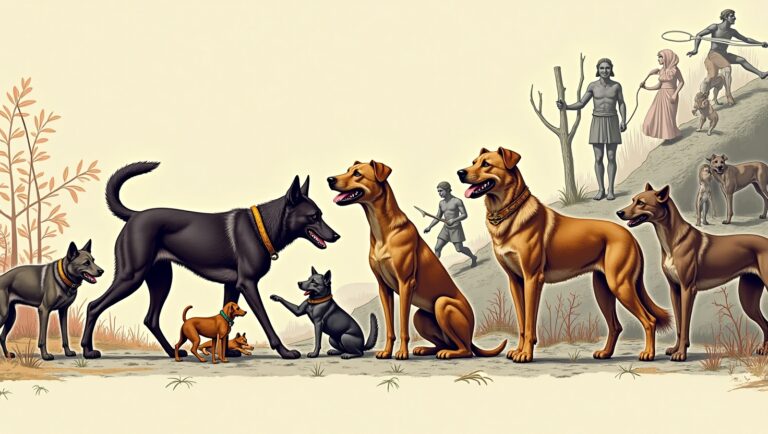The Rise of Dog Parks and Pet Services

Introduction: The Pet Boom and Urban Evolution
In the last two decades, cities across the globe have witnessed a noticeable transformation in how they accommodate pets, especially dogs. This shift is largely driven by a significant increase in pet ownership, particularly among millennials and urban dwellers. As of 2023, more than 70% of U.S. households own a pet, and nearly 90 million dogs live in American homes. The growing emotional bond between humans and animals, combined with rising disposable incomes, has fueled demand for dog-friendly infrastructure and an expansive network of pet services.
From repurposed city parks to mobile grooming vans and app-based dog walkers, this evolution reflects a broader cultural change: pets are no longer just animals; they are family.
Historical Overview of Dog Parks
The concept of dog parks is relatively new. The first official off-leash dog park in the United States, Ohlone Dog Park, was established in 1979 in Berkeley, California. It was born out of grassroots activism where local dog owners demanded safe, designated spaces for their pets to run and socialize freely. This early experiment proved to be a success and laid the groundwork for a national movement. By the early 2000s, cities like New York, Chicago, and Portland had begun integrating off-leash areas into urban park planning.
These spaces represented a paradigm shift in city design, introducing purpose-built infrastructure for pets—an idea that was once viewed as a luxury but is now considered essential to urban quality of life.
Modern Urban Pet Infrastructure
Urban planners today actively include dog-friendly zones in their blueprints. From rooftop dog runs in apartment complexes to dedicated off-leash dog parks in public areas, the urban pet infrastructure has expanded rapidly. Cities like Austin, San Diego, and Seattle are lauded for their extensive networks of dog parks, complete with double-gated entries, hydration stations, and canine agility equipment.
These projects are often funded through a mix of public resources, pet industry sponsors, and community organizations. Many cities even host public hearings to gather input from pet owners, ensuring that these parks serve both animal and human needs.
Benefits of Dog Parks
The rise in dog parks is more than a convenience—it directly supports canine health and behavior. Studies show that dogs who engage in off-leash exercise are healthier, less anxious, and better socialized. Additionally, regular interaction with other dogs and humans helps reduce behavioral problems such as aggression, destructive chewing, and excessive barking.
For humans, dog parks foster a sense of community. They serve as informal gathering places where people of different backgrounds interact, united by their shared love for pets. Cities with well-maintained dog parks report stronger neighborhood engagement and lower rates of isolation among residents.
Types of Dog Parks
Dog parks come in various forms, tailored to space availability, budget, and community needs:
- Off-leash dog parks: Enclosed areas where dogs can run freely without leashes.
- Leashed walking trails: Designed for exercise while maintaining leash control.
- Fenced vs open-concept: Urban areas often use fenced-in spaces for safety, while rural parks might use boundary markers.
- Small dog zones: Designated areas for smaller breeds to prevent intimidation or injury from larger dogs.
Some parks also incorporate dog beaches, canine splash pads, and forest agility trails, offering diverse stimulation and recreation.
Design Innovations in Dog Parks
Modern dog parks integrate advanced design principles to improve safety, hygiene, and user experience. Key features include:
- Artificial turf with drainage systems to prevent muddy surfaces
- Shaded seating areas for owners to relax while dogs play
- Canine agility courses for mental and physical stimulation
- Secure entry zones with double gates to prevent escape
Some parks even feature smart sensors for air quality monitoring, LED lighting for night-time use, and interactive toys powered by motion sensors. These innovations elevate the standard of pet-friendly spaces.
also read this Modern Canine History (19th Century–Present)
Pet Services Landscape: From Luxury to Necessity
Alongside the growth of dog parks is the explosive rise of pet services. What once were niche offerings like dog spas or personal trainers have now become widespread. In urban areas, pet services are not a luxury—they’re a lifestyle necessity.
Key services include:
- Dog walking
- Pet sitting
- Grooming and bathing
- Pet massage and physical therapy
- Behavioral training and consultation
Brands like PetSmart, Rover, Wag!, and Dogtopia have helped normalize and commercialize these services, creating on-demand convenience for busy pet owners.
Explosive Growth in the Pet Service Industry
The global pet care market is projected to reach $358 billion by 2027, with services contributing a significant share. Millennials and Gen Z lead this surge, spending generously on premium services, natural grooming products, and pet insurance. According to APPA, 85% of pet parents view their animals as children, justifying the increased spending.
Notably, boutique pet hotels, organic meal subscriptions, and mobile vet care have grown in popularity. This spending is not restricted to the elite; even middle-income families allocate significant resources for pet well-being.
Doggy Daycare and Pet Boarding Evolution
Daycare facilities are evolving to resemble childcare centers, offering:
- Social playgroups
- Structured nap times
- Real-time webcam monitoring
- Enrichment activities like puzzle games and scent work
Meanwhile, boarding options range from luxury suites with memory foam beds to cage-free environments that mimic home settings. Some facilities even provide daily report cards, capturing a pet’s behavior, meals, and mood.
Technology’s Role in Pet Services
Technology has revolutionized how pet services are accessed and delivered. Apps like Rover, Wag!, and Barkly Pets allow users to:
- Schedule dog walks or grooming appointments
- Track GPS routes
- Receive photo and video updates
Wearables such as FitBark and Whistle monitor dog activity, sleep, and location. For service providers, automated CRM systems, e-sign waivers, and client portals streamline business operations.
This digital integration enhances transparency and builds trust between pet owners and service professionals.
Mobile and On-Demand Pet Services
Convenience is a key driver in modern pet care. Mobile services eliminate travel stress and save time. Popular options include:
- Mobile grooming vans equipped with hot water, dryers, and grooming stations
- At-home vet care for vaccinations and wellness exams
- Door-to-door dog transport for daycare or boarding
These offerings are particularly popular among senior citizens, multi-pet households, and owners of anxious or special-needs pets.
Veterinary Services and Preventative Care
Regular veterinary care is now more accessible than ever. Many dog parks host:
- Vaccination booths
- Microchipping clinics
- Health screening events
Pet services often incorporate health checks during grooming or training sessions. Companies like Banfield Pet Hospital and VCA Animal Hospitals also offer wellness plans that cover routine checkups, reducing long-term costs and promoting early disease detection.
Pet Insurance and Financial Planning
To accommodate the rising costs of pet care, many owners are turning to pet insurance. Coverage typically includes:
- Accidents and injuries
- Illness and chronic conditions
- Routine wellness care (in premium plans)
Companies like Trupanion, Healthy Paws, and Lemonade Pet Insurance offer customizable plans. This financial planning allows pet owners to utilize more services, confident that unexpected expenses are manageable.
Dog Parks and Community Building
Dog parks are more than pet-friendly zones—they’re community anchors. Local organizations often host:
- Pet adoption fairs
- Charity dog walks
- Training workshops
- Pet costume contests
These events build social capital and attract foot traffic that supports nearby businesses. A well-maintained dog park can raise property values, improve public health, and foster cross-generational interaction.
Pet-Friendly Urban Design
Designing cities with pets in mind includes:
- Dedicated pet zones in high-rise apartments
- Multi-use trails that accommodate pets and strollers
- Pet hydration stations along walking routes
- Waste disposal bins and compostable bag dispensers
Urban planners in cities like Vancouver, Copenhagen, and Melbourne now treat pet-inclusive planning as a necessity rather than an afterthought.
Challenges Facing Dog Parks
Despite their benefits, dog parks face several challenges:
- Overcrowding can lead to aggression or stress
- Unscooped waste poses hygiene concerns
- Lack of supervision may result in injury
Cities must enforce usage guidelines, provide adequate lighting, and fund maintenance crews. Community policing, signage, and education campaigns can mitigate many issues.
Pet Service Regulation and Certification
To ensure safety and professionalism, several regions have introduced:
- Licensing requirements for groomers and walkers
- CPR and first-aid certification
- Background checks for service providers
Organizations like Pet Sitters International and International Association of Canine Professionals (IACP) set standards that promote ethical conduct and technical competency.
Environmental Considerations
The pet industry is becoming more eco-conscious, with:
- Biodegradable grooming products
- Recycled materials in pet toys and accessories
- Compostable waste bags
- Solar-powered lighting in dog parks
Even pet food companies are exploring sustainable sourcing, plant-based diets, and carbon-neutral shipping.
Global Trends in Dog Parks and Pet Services
Other countries are innovating rapidly:
- Japan leads in pet cafes and luxury pet shopping malls
- South Korea integrates pet spas with vet clinics
- France and Italy allow dogs in most public places
- The Netherlands supports mobile microchipping services
These global models provide inspiration for expanding pet services beyond traditional formats.
Future Outlook: Smart Cities and Pet Inclusion
The next generation of urban design will feature:
- AI-powered surveillance in parks for safety
- IoT-based monitoring of dog behavior and hydration
- Digital kiosks for booking services on the go
- Subscription-based wellness plans combining vet care, grooming, and daycare
As smart cities evolve, pets will be core stakeholders, not secondary users.
Conclusion: A Tail-Wagging Transformation
The dramatic rise of dog parks and pet services reflects our evolving relationship with animals. They have become central to our lives—emotionally, economically, and socially. As cities adapt to this new reality, they foster environments where both people and pets thrive. From modernized parks to app-integrated grooming, the transformation is far from over.
It’s not just about amenities—it’s about creating inclusive, connected, and compassionate communities where every species belongs.





